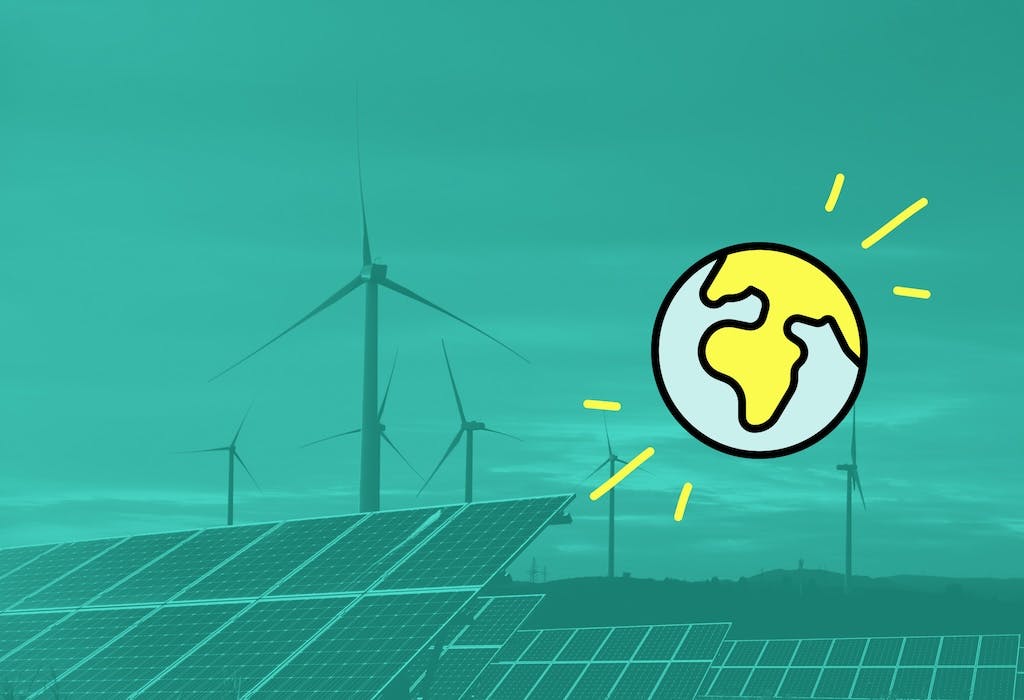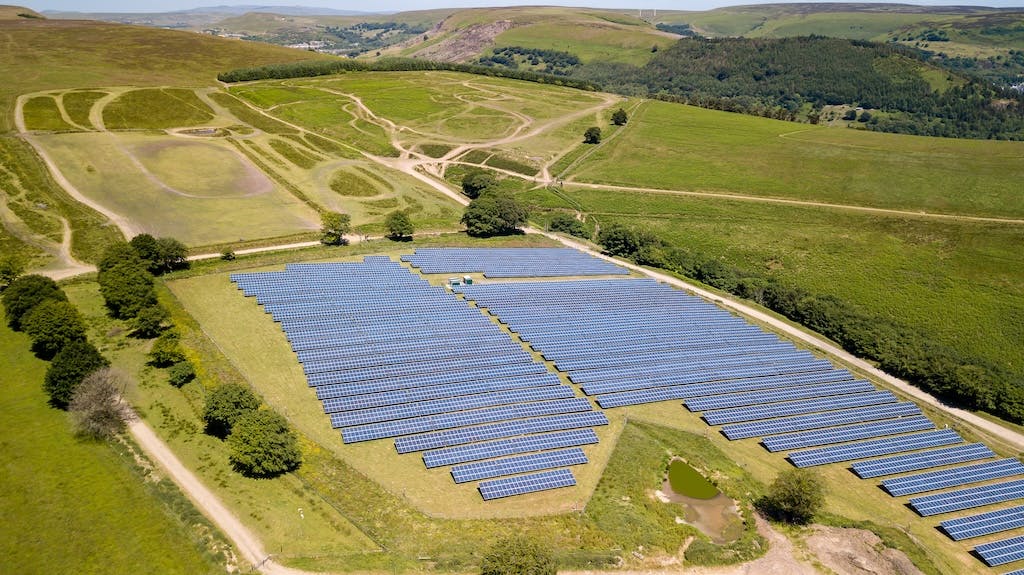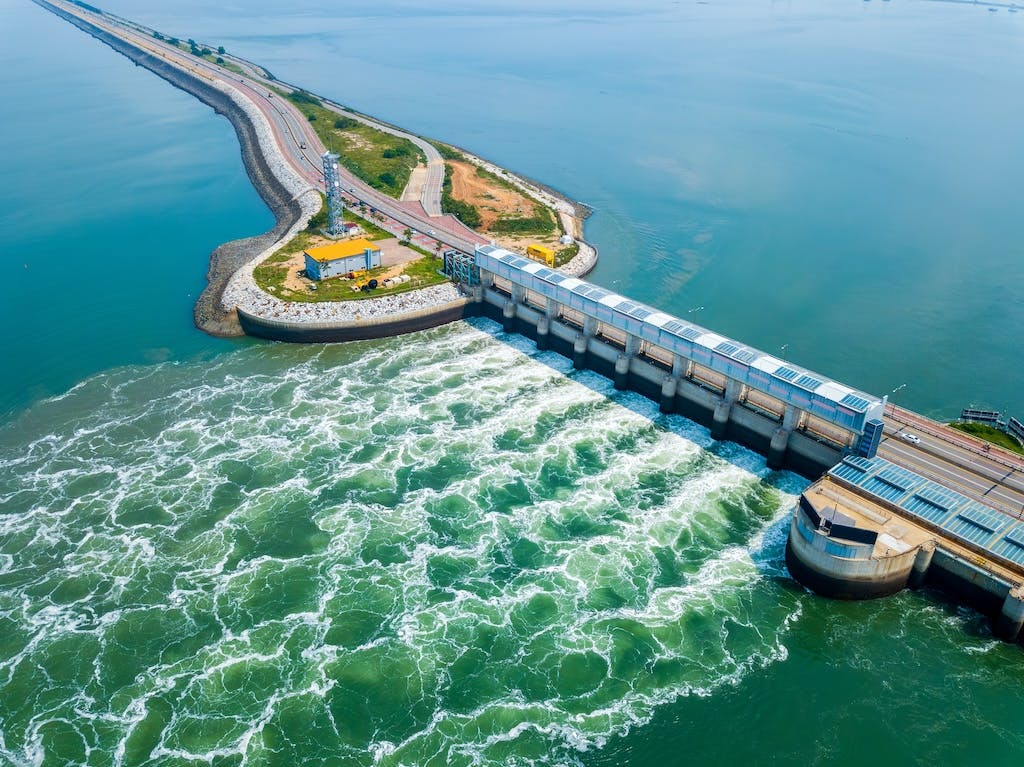18 facts about renewable energy
Explore our rundown of 18 fascinating facts about renewable energy, including a bit of Victorian history, Brazil's big achievements, and some ingenious jellyfish developments.
Written byMelody Abeni

Calculate savings
What kind of home do you live in?
Calculate savings
What kind of home do you live in?
At a glance
📈 Global renewable energy production will reach 17,000TWh by 2030
🪵 Bioenergy is the world’s largest source of renewable power
🌊 There are only 12 tidal power plants around the world
🪼 We might be able to generate electricity with jellyfish
🚀 There could be a solar farm in space by 2030
Ever since the Industrial Revolution the world has depended on dirty fossil fuels to generate electricity, but the toxic impact on our planet has motivated people to change course.
Innovators across the globe have found ingenious solutions to generate power in ways that don’t harm our environment irreversibly, with wind and solar taking centre stage.
In this article, we’re going to explore 18 facts about renewable energy, including which countries are leading the charge, which sources of power have become surprisingly neglected, and where the most exciting new developments are happening.
If you’re keen to join the scene, naturally we think putting solar panels on your roof is a smart step. To find out how much you can save with a solar & battery system, answer a few quick questions below and we’ll provide an estimate.
Find out how much you can save
What kind of home do you live in?
1. Seven countries are almost 100% powered by renewables
Seven countries now generate over 99% of their electricity with renewable sources. These are Albania, Bhutan, the Democratic Republic of Congo, Ethiopia, Iceland, Nepal, and Paraguay.
For most of the countries on this list, over 95% of their electricity comes from hydroelectric power.
Case in point: Paraguay generates around 48 terawatt-hours (TWh) (99.5% of its electricity) from hydropower, while Iceland relies on hydropower and geothermal for 75.5% and 24.5% of its power, respectively.
2. 2024 marked the first time the UK's renewable generation exceeded 51%
In 2024, the UK achieved a major milestone; renewables generated 51% of its electricity, marking the first time clean energy surpassed half of total annual generation.
Renewable output rose by 6.5% to a record 144.7TWh , driven by increased wind and solar capacity. Wind alone accounted for 30% of electricity, while solar reached 5%.
Meanwhile, fossil fuel's share of generation plummeted to a low of 31.5% - more on that next.
To learn more, check out our guide to the UK’s renewable energy usage.

3. And the UK’s fossil fuel power generation plummeted to 1950s levels
Figures also show that electricity generation from fossil fuels in the UK fell by 16% in 2024, reaching just 89.7TWh - its lowest level since the 1950s.
This steep drop reflects the country’s shift toward renewables, which now dominate the energy mix. With coal's complete phase-out in September 2024, gas is still the UK’s primary fossil fuel, but its share is decreasing as the years roll on.
Overall, the UK's push for net-zero emissions by 2050 relies on expanding renewable power sources like wind and solar, and reducing overall energy consumption.
4. Global renewable electricity generation will climb to 17,000TWh by 2030
The world's renewable electricity generation is on track to exceed 17,000TWh by 2030 , which is almost a 90% rise from 2023 levels, and is expected to be enough electricity to meet the power demand of both the US and China in 2030.
This growth will mostly come from solar and wind power, thanks to supportive policies like China's 14th Five-Year Plan , the EU’s Green Industrial Plan , and the US Inflation Reduction Act of 2022.
5. Modern bioenergy is the world's largest source of renewable power
Over half the world's renewable energy in 2023 came from bioenergy, making it the largest source of green power. It provides more energy than wind, solar, and hydropower combined, contributing over 6% of the global energy supply.
Bioenergy is especially vital for sectors like aviation and shipping, which are difficult to decarbonise.
As the global leader of bioenergy demand and production, Brazil's bioenergy sector is booming , thanks to supportive policies like its Fuel of the Future law, which promotes biofuels such as ethanol, biodiesel, and biomethane.
6. Brazil has the third largest renewable energy capacity in the world
Speaking of Brazil, the country currently has the third largest renewable energy capacity in the world, behind China and the US, and it measured an impressive 213.9 gigawatts (GW) in 2024.
Hydropower accounted for around 60% of Brazil’s electricity generation in 2023, followed by wind (13.5%) and biomass (7.6%).
Given Brazil’s heavy focus on renewables, it’s no surprise that the country covers about 89% of its electricity demand with clean sources.
7. There’s a biomass power plant that runs on chicken poo
The Netherlands is home to a biomass power plant fuelled solely by chicken poo. This innovative facility converts 1,250 tonnes of poultry waste per day into over 290 gigawatt-hours (GWh) each year - enough to power 45,000 homes.
Beyond producing clean energy, the plant addresses a major environmental issue by preventing methane emissions from untreated manure, a potent greenhouse gas. And it's pretty eco-friendly, recycling a third of all Dutch poultry waste.
Closer to home in the UK, there are a few smaller bioenergy plants which are also fuelled by poultry waste.
These include the Melton Renewable Energy-run plants in both England and Scotland (Thetford Power Station, Eye Power Station, and Westfield Power Station) , as well as the Tully Biogas plant in Northern Ireland.
8. China is the world’s largest producer of wind power
China leads the world in wind power production, having generated 885TWh in 2023, making it the country’s third-largest source of energy. It also produces twice as much as the second largest global producer, the US.
With vast territory and a long coastline, China has exceptional wind energy potential. As of the end of 2023, it also has the world's largest installed wind capacity, at 561.5GW, which is almost half of the world's total capacity of 1,136GW.
9. The wind turbine was invented in Scotland
James Blyth, a Scottish engineer, is credited with inventing the world’s first wind turbine, which started generating electricity in 1887.
Built in Marykirk, Scotland, Blyth’s 33-foot-tall turbine powered his holiday home and even lit 10 lightbulbs. And despite his offer to light the local village being rejected, his invention marked a turning point in the development of renewable energy technology.
Decades later, the modern wind turbine design was developed in Denmark, laying the foundation for today’s global wind energy industry.
10. The first hydroelectric power scheme was set up in 1870
In 1870, William Armstrong, a Victorian engineer, created the world's first hydroelectric power project at his Cragside estate in England.
Armstrong used a turbine to generate electricity from an artificial lake. The system lit the house with incandescent bulbs and powered other household appliances, making Cragside the first house in the world to run on hydroelectricity.
Armstrong’s innovation paved the way for modern hydropower, which now generates over 4,250TWh annually and supplies around 14% of the world’s electricity.
11. There are surprisingly few tidal power plants
Tidal power has potential, but it's significantly underutilised compared to other sources of renewable energy. High costs, limited suitable locations, and technical challenges mean that tidal power plants are currently few and far between.
In fact, there are less than a dozen commercial tidal power plants currently in operation around the world.
The high density of water (830 times denser than air) makes tidal energy highly predictable and efficient, but building and maintaining plants in corrosive seawater is expensive.
At the moment, the largest tidal power plant is the Sihwa Lake Tidal Power Station in South Korea, which was completed in 2011 and generates 552GWh each year.
Over here in the UK, the Orbital O2 2MW tidal turbine in Scotland's Orkney Islands is set to generate enough electricity to power 2,000 homes between 2022 and 2037.

12. The US is the world’s largest producer of geothermal power
The United States leads the globe in geothermal power production, with an installed capacity of 391.9GW at the end of 2022. According to the US Energy Department, the country generated a whopping 17TWh of geothermal electricity in 2023.
The world's largest geothermal complex, California's Geysers Geothermal Complex, contributes 725MW from its 22 power plants - which is enough to cover at least half of California's power demand.
A major benefit of geothermal energy is that it offers consistent, 24/7 power. Unlike other renewable energy sources, it's unaffected by weather changes, making it exceptionally reliable.
13. Jellyfish could be a source of renewable energy
Though experimental, jellyfish may hold surprising potential as a renewable energy source, according to the Ecologist.
Their bioluminescence comes from green fluorescent protein (GFP), which reacts to UV light and excites electrons. Scientists are currently exploring how using GFP in solar panels instead of silicon could mean a cheaper, greener form of energy (called ‘biosolar’).
Researchers are also looking into how jellyfish movements could produce something called piezoelectricity. Jellyfish tentacles are composed of piezoelectric polymers, and when the ocean waves move through these polymers, it creates a potential source of power.
14. You can generate electricity through dancing
Did you know that it's possible to generate electricity through your dance moves, thanks to kinetic flooring technology?
Special tiles convert energy from footsteps into electricity using an electromechanical or piezoelectrical system. Each tile can produce up to 35 watts (W) of power, enough to light up LEDs or charge a mobile phone.
These floors have powered concerts, nightclubs, and even the White House, which shows how everyday movements can generate sustainable energy in a fun, interactive way.
So, not only can you burn energy by throwing shapes on the dancefloor - you can create it, too.
15. Artificial leaves can generate power
Artificial leaves are a promising innovation that mimic photosynthesis to produce clean energy. These devices use sunlight, water, and carbon dioxide to create hydrogen or liquid fuels, leaving no pollutants behind.
Researchers at the University of Cambridge are developing floating artificial leaves that could eventually operate at sea, producing green fuels for more polluting industries like shipping and aviation.
Scientists hope that this will reduce these industries' reliance on fossil fuels. A 2020 report from the International Maritime Organization (IMO) found that greenhouse gas emissions from important fields like shipping account for just under 3% of total global emissions.
16. The world’s oldest solar farm is in California
California's Mojave Desert is home to the world's oldest solar farm, the Solar Energy Generating Systems (SEGS) - a name which would have certainly seemed unique at the time.
SEGS originally consisted of nine plants and still produces around 662GWh of clean energy each year, despite only having one operational plant left, as of 2021.
Built in 1984, SEGS is a solar thermal facility, meaning it uses mirrors to concentrate sunlight onto a receiver, heating synthetic oil to produce steam that drives turbines.
Unlike modern solar PV panels, this method generates electricity through heat rather than direct sunlight conversion.
17. The world’s largest solar farm is in China
China is home to the world’s largest solar farm, the Golmud Solar Park in Qinghai Province. Commissioned in 2019, it spans 2.6 square kilometres and has a capacity of 2,800MW, powering millions of homes each year.
The farm integrates 80 separate solar plants and benefits from Qinghai’s high altitude, which provides excellent solar exposure and cooler temperatures for efficiency.
18. There could be a solar farm in space by 2030
By 2030, the first solar farm in space could become a reality. Projects like the European Space Agency’s SOLARIS aim to place satellites in orbit to harvest solar energy, and then beam it to Earth using microwaves.
China is also developing a massive 1km-wide solar array in geostationary orbit , capable of collecting energy 24/7 without having to deal with the interruptions encountered by earth-based solar panels, like cloudy weather and nighttime.
Summary
Renewable energy is evolving in fascinating ways, from artificial leaves and jellyfish tentacles to space-based solar farms. Every source of renewable power has its limitations, but combine enough of them together, and they can all make up for each other’s shortfalls.
If you’re excited by renewable energy and want to upgrade your property to an eco home, naturally we think solar panels are a great place to start.
To find out how much you could save with a solar & battery system, answer a few quick questions below, and we’ll provide an estimate.
Find out how much you can save
What kind of home do you live in?

Written byMelody Abeni
Based in London, Melody is a specialist green technology writer who has been covering sustainability, climate action and ESG for the past five years, after gathering operational experience in green investing and financial services. She has written for various industry publications, including renewable technology advisor The Eco Experts, and she holds a Master’s degree in law from Birkbeck University.